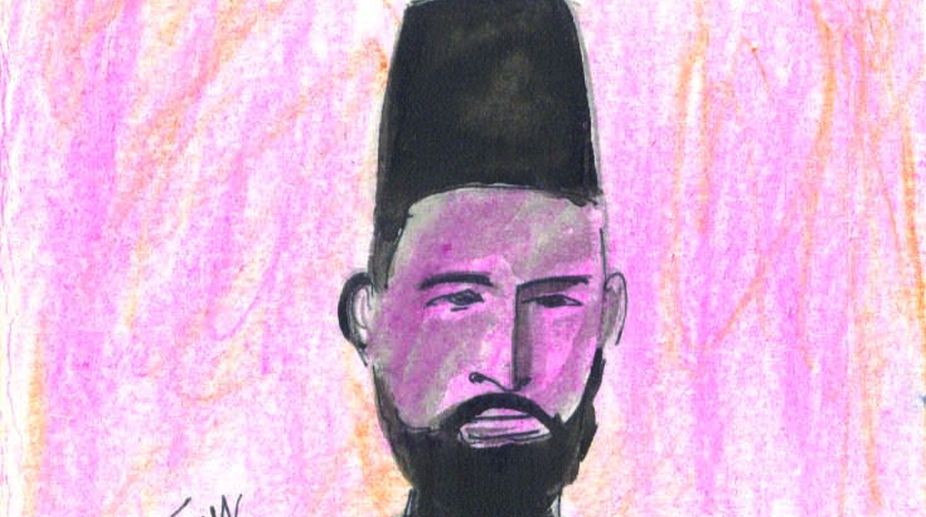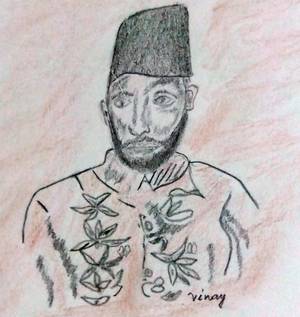An Oriental wearing a Western suit and carrying a small box walked down a street in Paris when he saw a man rolling on the ground. Quickly he took out something from the box and, after a few minutes, the man got up, clutched his stomach for a while and then, with a nod of thanks, walked away. The Oriental was Hakim Ajmal Khan who had put away his sherwani and pyjamas to don a suit during his visit to France in 1925. It was widely believed by generations of Delhiites that Ajmal Khan had a magic chest from which he took out medicines to effect near-miraculous cures, like that of a woman in England with an abnormal issue of monthly blood and an epileptic at an Iraqi shrine. He spent nine years as the guest of the Nawab of Rampur, where he revived a dying begum.
Over the years, since his death in 1927, people seem to have forgotten the great hakim whose lasting legacy is the Unani Tibbia College in Karol Bagh. But last week Jamia Millia Islamia held a symposium on the works of Hakim Sahib, who was one of its founders and also the first Chancellor in 1920. It was decided to set up a Hakim Ajmal Khan Institute for Literary and Historical Research in Unani Medicine at Jamia Millia. The proposed institute would translate the classical works on Unani medicine which are hitherto available only in Urdu and Arabic.
Hakim Ajmal Khan was descended from Hakim Sharif Khan. His father Hakim Mahmud Khan was one of the three sons of Sharif Khan and, interestingly enough, also had three sons of whom Ajmal Khan was the youngest. His elder brother, Hakim Abdul Majid died in 1901 and the second brother three years later. Ajmal Khan founded the Tibbia Conference in 1906 to bring hakims together for joint initiatives. His popularity increased with each passing year and he began to be regarded as a man whose views on medicine, politics and religion were widely respected, not only by Hindus and Muslims but also by Europeans like C. F. Andrews and Sir Malcolm Hailey, Chief Commissioner of Delhi. Mahatma Gandhi, six years younger than Ajmal Khan, was the one who opened Tibbia College in 1920 though he regarded Unani and other medicines as “black magic” and believed in natural cures.
It is interesting to note that Ajmal Khan started off by wearing the Mughal angarkhas, then switched over to the Aligarh sherwani and pyjamas and then suits for foreign visits he made in 1911 and 1925, besides the one in between to Shia religious places in the Middle East. When Ahmed Ali wrote his “Twilight in Delhi”, he couldn’t help mentioning the great hakim in it as the one who had attended to the novel’s hero, Mir Nihal after a paralytic attack. The hakim gave him rare medicines and also prescribed the soup of wild pigeons, caught by the Mir’s Man Friday, Ghafoor, whose own wife had died of abdominal ulcers since she was wedded at a young age to a much older. Even the hakim could not cure her as Ghafoor did not exercise restraint. But Mir Nihal surely benefited from his medication, as also the goat being masqueraded as a sick purdah woman and prescribed green grass.
Barbara D. Metcalf, who wrote a learned paper on Ajmal Khan and his family, recalled the words of the poet Hali on the death in 1900 of Hakim Mahmud Khan: “…Mahmud Khan’s strength was an honour to our race/ But he too, left the World. Alas, the fortune of our race/Ajmal Khan filled up the gap with élan. Not only that, he was also a born poet with the pseudonym of Shahid Dihlawi (possessed lover from Delhi) and left behind a dewan of his poetry, which he sometimes recited at mushairas and during debates on who was greater: Daagh or Zauq. Surprisingly enough Ghalib was left hanging in between.”
Being a man of common sense, despite dabbling in romanticism, he refused to entertain fakirs who claimed to have secrets of alchemy. Ahmed Ali writes about Mir Sangi who had wasted his wealth in trying to make gold and of Molvi Dulhan, dressed as “the bride of God in red sari and with bangles and long hair like a woman”.
According to the Moulvi, there is a prescription written on the Southern Gate of the Jama Masjid which no one has been able to unravel. It says (for alchemy is needed) “half a piece of That”! However the vital word describing ‘That’ is missing though a fakir once claimed that it was ‘actually a small, golden flower with red circles and dots on the petals”. When the problem was referred to Ajmal Khan he wrinkled his forehead and remarked “There are other things worth seeking instead of the art of making gold which remains a fantasy”. The writing on the masjid gate is just a brain teaser.”
The hakim sahib is then said to have walked away with a shrug of his shoulders, still what followed him was the belief that the Sharifi family had a special verbal formula (amal-i-taskhir) which never failed to effect a cure. It is not known whether Ajmal Khan divulged it to his successors but those who came for treatment to the Hindustani Dawakhana in Ballimaran probably thought he had, for after all wasn’t he the “Masiha-e-Hind!”.
source: http://www.thehindu.com / The Hindu / Home> Society / by R.V. Smith / May 31st, 2015










